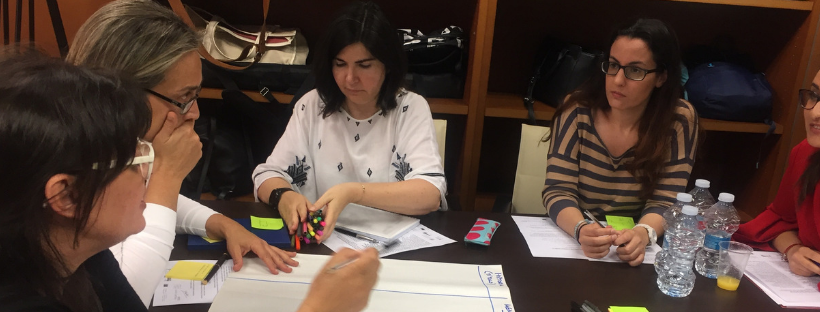COMMUNITY REPORTING AS A TOOL FOR DIALOGUE

This is our third blog in a series about how Community Reporting has been used as a tool for co-creation in the CoSIE project. In this blog post, we wanted to share with you some of learning from applying Community Reporting as a tool for dialogue between different people, and explore some of our successes and challenges during this process…
In the CoSIE project, Community Reporting as a tool for dialogue has been used as an initial engagement activity for stakeholders, to generate ideas for the pilots and to exchange knowledge between different people, groups and organisations. Some of the key strengths in using Community Reporting in this way have been:
- It supports people to think ‘out of the box’ and from ‘different perspectives’. This can help improve problem-solving.
- It helps people, groups and organisations to share knowledge via storytelling and thus more effectively learn from one another’s experiences.
- Its focus on equity helps to provides opportunities for people with opposing or differing perspectives and experiences to engage in a non-hierarchical dialogue. In doing so, voices that are often unheard are listened to.
Reflecting on their usage of Community Reporting as a tool for dialogue, the Italian pilot talks about how stories gathered from families about their wellbeing and health, helped to highlight “less obvious issues and helped in rethinking the project in some way” for the healthcare professionals involved. In essence, providing a scenario in which stories from families could be heard by medical workers and the people steering the pilot, helped them to see things from their perspective. This ultimately led to the understanding that the App they were seeking to create to tackle childhood obesity needed to be more relational. More so, the UK pilot felt that through the Conversation of Change events, the probation service was able to “hear people’s views directly” and speak together as people on probation, peer mentors/volunteers, probation workers and service managers to celebrate what is working but also address what isn’t.
In terms of the issues we encountered in using Community Reporting as a dialogue tool in CoSIE, it was felt sometimes that it was hard to reach a consensus between different perspectives as there were too many ideas. More so, for the Swedish pilot, they felt that it was too difficult for the people with cognitive disabilities they worked with to participate in a dialogue about their stories with decision-makers. To get over this obstacle, the pilot used recordings of the stories at key decision-making meetings as a means of bringing those people’s experiences to the space.
In the next blog post in this series, we will explore how Community Reporting has been applied as tool for reflection in the CoSIE project, and if you want to read the introductory blog in this series or the previous one on how we’ve used Community Reporting as a tool for insight, then click on the hyperlinked words.